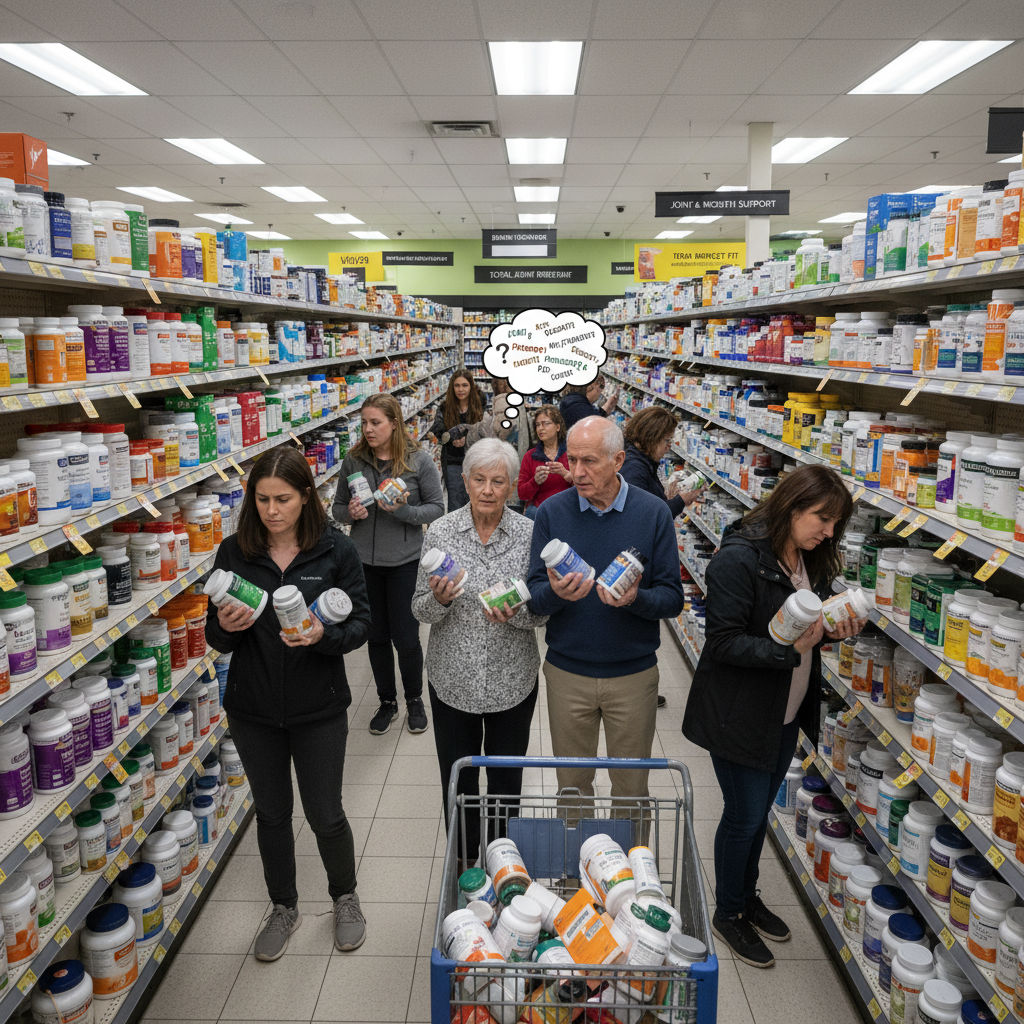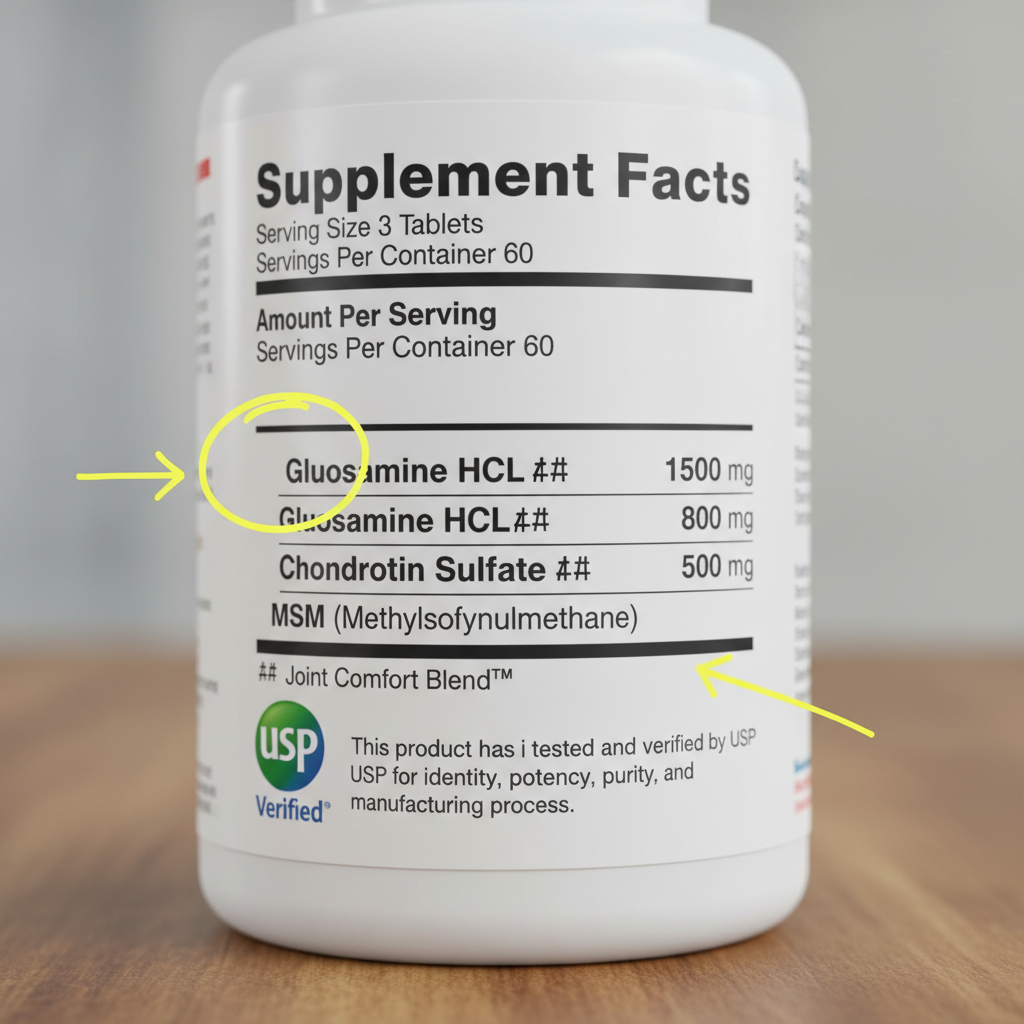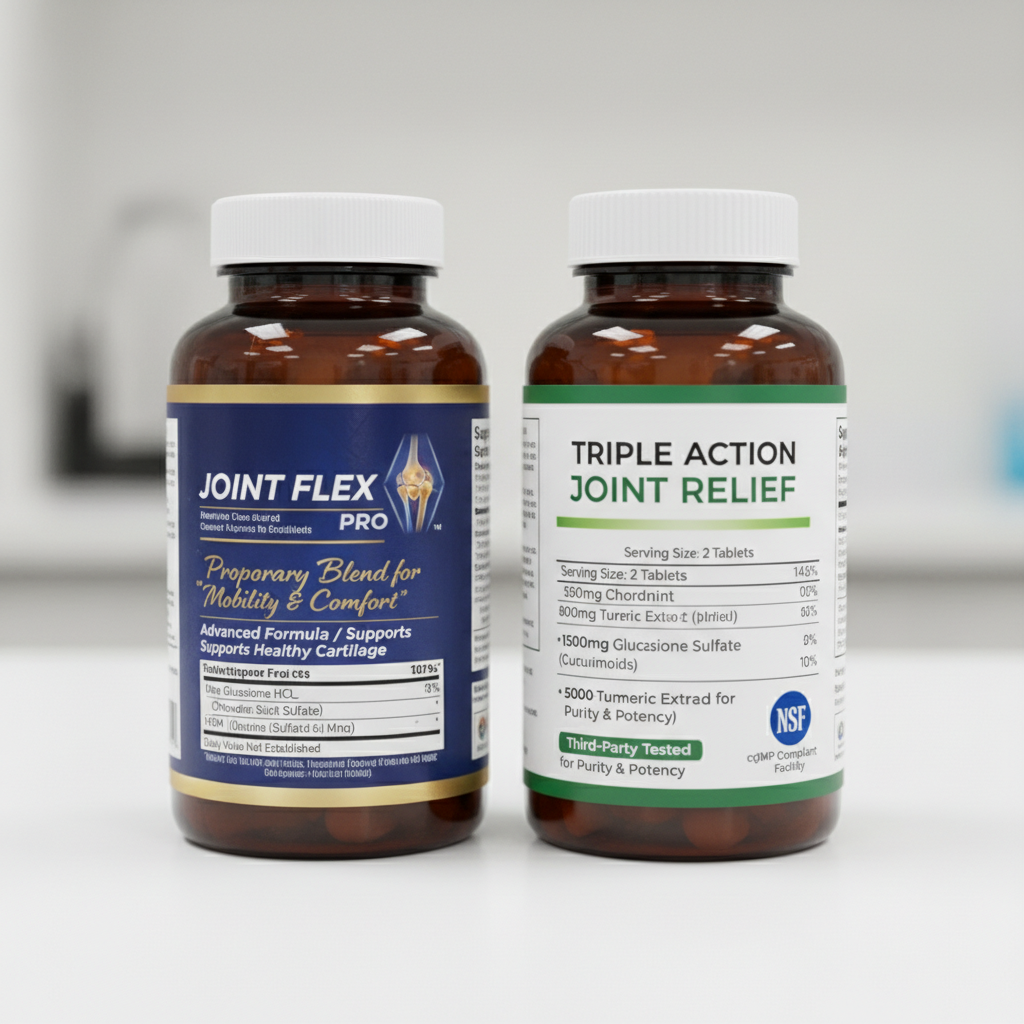
Every shelf screams relief for aching joints, but if you’ve ever wandered the supplements aisle hoping to ease knee pain or stiffness, you know just how confusing glucosamine and chondroitin choices have become in 2025. Flashy claims, ‘triple strength’ blends, and bargain-bin prices tempt buyers—but how many actually deliver real results? Here’s how to separate the science-backed from the snake oil, and avoid the costly mistakes most shoppers still make.
Why Most ‘Joint Support’ Labels Mislead You in 2025
It’s no secret: supplement regulation still lags far behind consumer demand. Despite FDA guidelines, manufacturers can legally use phrases like ‘clinically tested’ or ‘doctor recommended’ without disclosing actual clinical results or physician endorsements. Worse, independent lab tests in 2025 continue to uncover joint products with underdosed active ingredients, cheap fillers, and even contaminants—making label literacy a must for anyone serious about joint health[6][1].
Red Flag #1: The Wrong Type of Glucosamine
All glucosamine is not created equal. Glucosamine sulfate is the form found in most high-quality clinical trials, with better evidence for symptom relief. In contrast, glucosamine hydrochloride (HCl) is often used in cheaper blends because it costs less to produce—but multiple large studies show it’s no more effective than placebo for knee osteoarthritis[7][6]. If you see ‘glucosamine HCl’ as the main ingredient and the price seems too good to be true, it probably is.

Red Flag #2: Underdosed or ‘Proprietary’ Joint Blends
Look closely at the Supplement Facts panel. The clinically studied dosages are 1,500 mg of glucosamine sulfate and 1,200 mg of chondroitin sulfate per day—ideally divided into two or three doses[2][4]. Many joint blends, especially those labeled ‘triple strength’, only contain a fraction of these amounts (sometimes hiding this under a ‘proprietary blend’ label). If the supplement won’t show exact milligrams of each ingredient, move on.
Red Flag #3: No Third-Party Testing or GMP Certification
With joint supplements ranking among the most adulterated categories, skip brands that don’t publicize their third-party lab testing or Good Manufacturing Practices (GMP) certification. Look for seals from NSF, USP, or Informed Choice—these indicate the product’s contents actually match what’s listed, and are tested for heavy metals and contaminants[1].
Spotlight: 2025’s Most Transparent Joint Support Supplements
If you want formulas that pass the label-and-lab test, here’s what’s earning trust, top ratings, and repeat buyers this year:
- NOW Glucosamine & Chondroitin with MSM Double Strength – 1,500 mg glucosamine sulfate, 1,200 mg chondroitin sulfate, 1,000 mg MSM per three-capsule serving. $33 for 120 capsules. GMP certified, third-party tested, and no proprietary blends.
- Doctor’s Best Glucosamine Chondroitin MSM – Delivers the clinical dose (1,500/1,200 mg), uses non-shellfish glucosamine sulfate, and runs $28–$34 for 240 capsules. USP-verified, vegan-friendly.
- Kirkland Signature Extra Strength Glucosamine & Chondroitin – Club-store pricing (often $23 for 220 tablets), but still hits research-backed dosages. No artificial colors or preservatives, and widely recommended by pharmacists for value and quality.
- HealthyHey Double Strength Glucosamine Chondroitin and MSM – A new favorite in 2025, featuring 4,000 mg total actives per serving (glucosamine sulfate, chondroitin sulfate, MSM), FSSAI and US FDA certified, $37 for 90 capsules. Especially popular in the UK/EU and India for transparent sourcing and potency[1].
Meanwhile, avoid common pharmacy ‘house brands’ or unproven online bargains with vague labels or dosages under 1,000 mg per serving—these rarely deliver symptom relief and may not contain what they claim[4][1].

2025 Pricing Trends: Why Cheap Isn’t Always a Bargain
Sticker shock? High-potency formulas now average $25–$40 per 1–2 month supply. Bargain brands under $20 often cut corners on active ingredient type, potency, or third-party testing. With independent labs finding 1 in 5 low-cost joint supplements fail quality checks, investing in a fully transparent, clinically dosed product is worth every penny for peace of mind and real results.
Step-By-Step: How To Audit a Joint Supplement Before You Buy
- Ignore front-label hype. Flip the bottle—focus on ‘Supplement Facts’ and ingredient type.
- Check for glucosamine sulfate (not HCl) and chondroitin sulfate. Beware blends listing ‘proprietary joint complex’ with no individual mg amounts.
- Look for clinical dosages: At least 1,500 mg glucosamine sulfate + 1,200 mg chondroitin sulfate per daily serving[2][4].
- Scan for third-party testing: Seek GMP, USP, NSF, or Informed Choice seals; check company website for lab reports or batch verification.
- Avoid unnecessary ‘add-ons’: Skip products with artificial dyes, sugars, or cheap fillers—these add no benefit and may upset digestion.
- Search for recent independent lab reviews: In 2025, consumer watchdogs like Labdoor and ConsumerLab routinely uncover supplements with mislabeled or missing ingredients. A quick search can save your joints and your wallet.
- Trial period: Experts recommend an 8–12 week trial of a quality supplement; if you see no benefit, don’t keep buying—some people simply don’t respond[3][6].
Expert Advice: The ‘Blunt Truth’ on Glucosamine & Chondroitin in 2025
Top rheumatologists and sports medicine experts warn: these supplements do not regrow cartilage. Some studies show a modest slowing of joint space narrowing, but most benefits are symptom-based—reduced pain and stiffness, sometimes improved mobility[2][3]. Consistent results require the right dose, the right ingredient types, and a willingness to stop if no benefit is seen after three months[6].
Consult your healthcare provider before starting any supplement, especially if you take blood thinners or have shellfish allergies (common in glucosamine sulfate sourcing)[5][8].
Ready to Shop Smarter—and Move Easier?
The 2025 joint supplement market is crowded with promises, but a savvy label audit and a science-first mindset set you up for real relief. Use the checklist above, demand clinical dosages and transparency, and don’t get fooled by underdosed blends or bargain pricing tricks. Your joints—and your wallet—will thank you.

Don’t wait: With premium products occasionally running out of stock due to supply chain hiccups and growing demand, now’s the time to lock in a quality supplement for your joint health routine.


